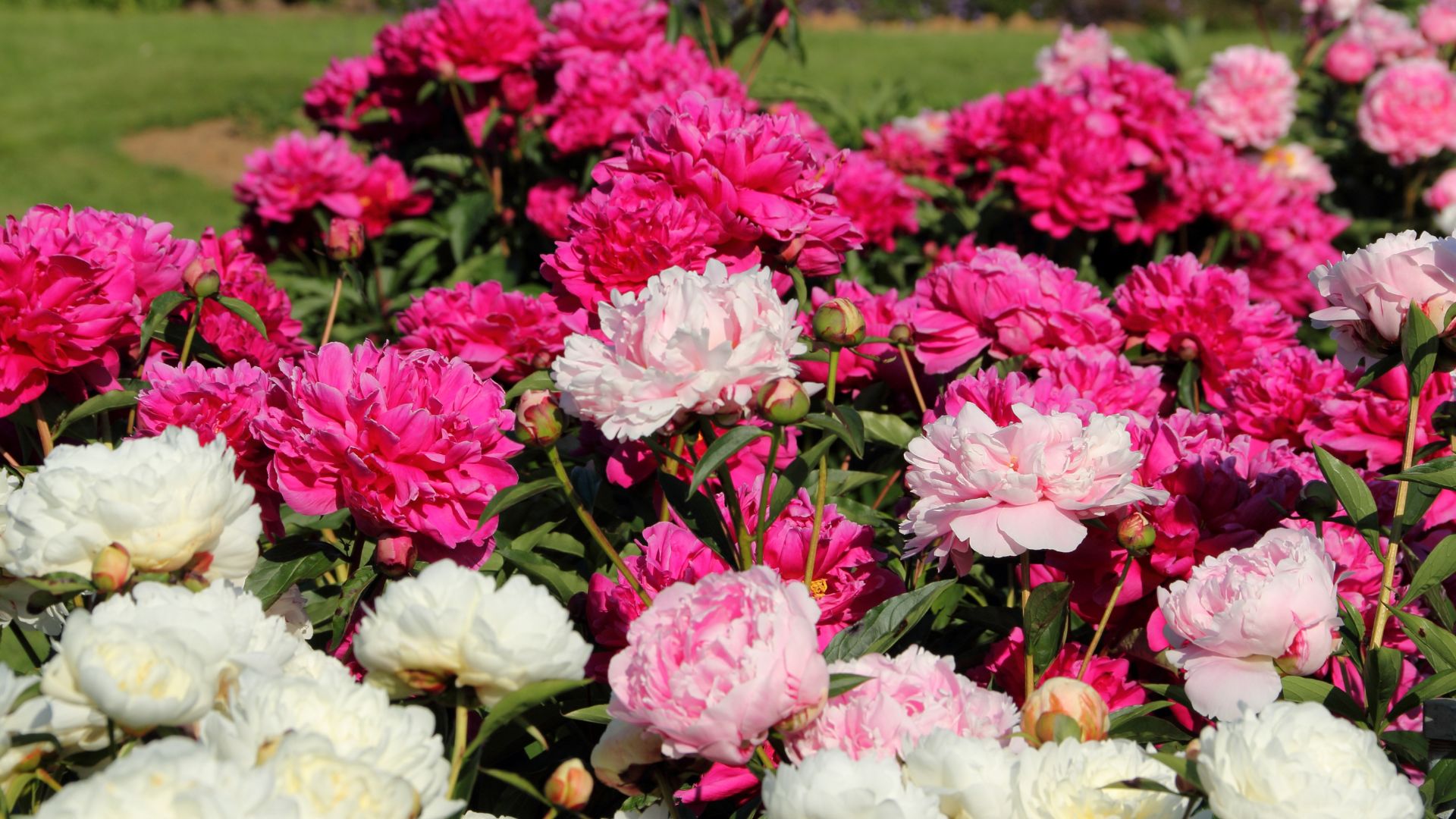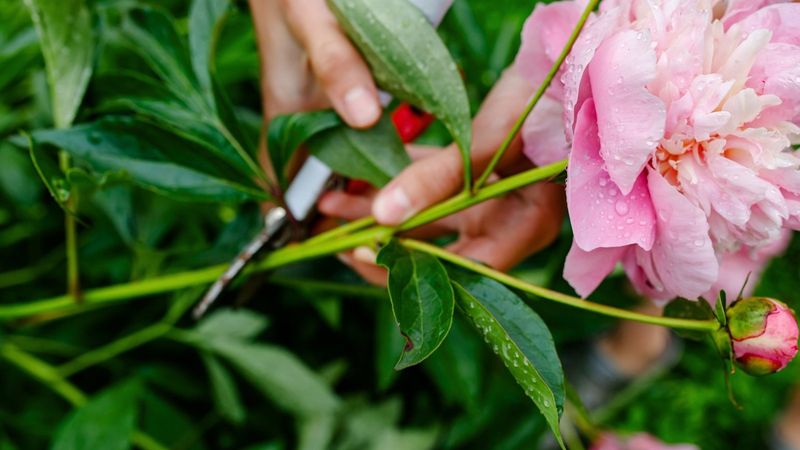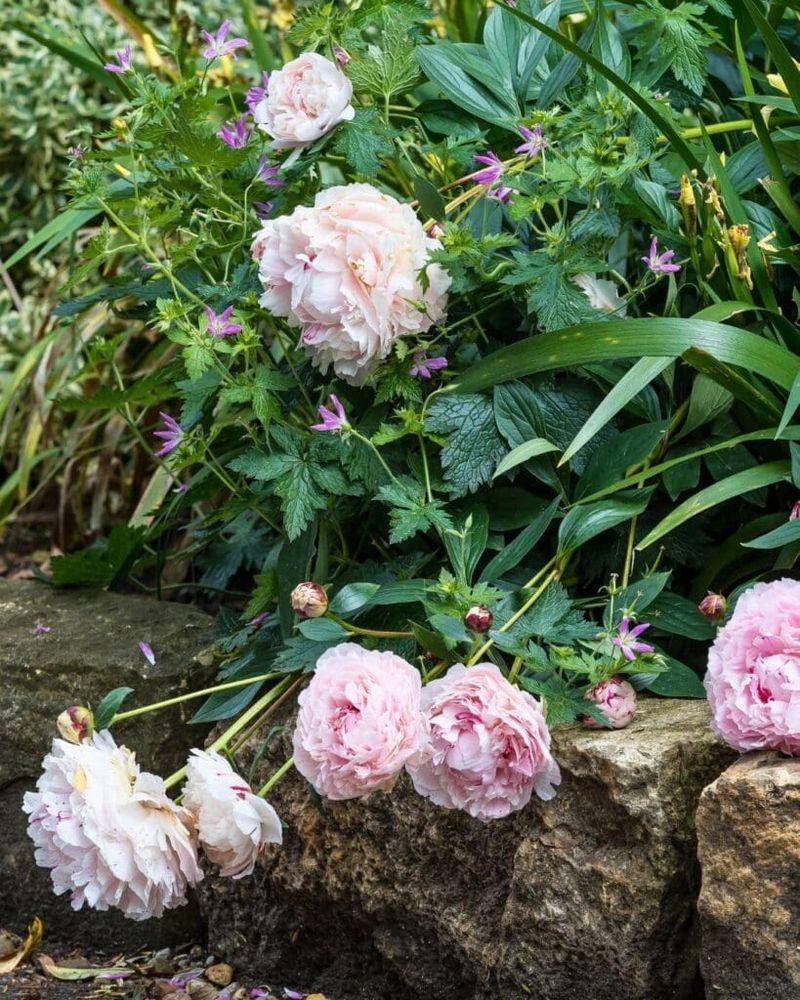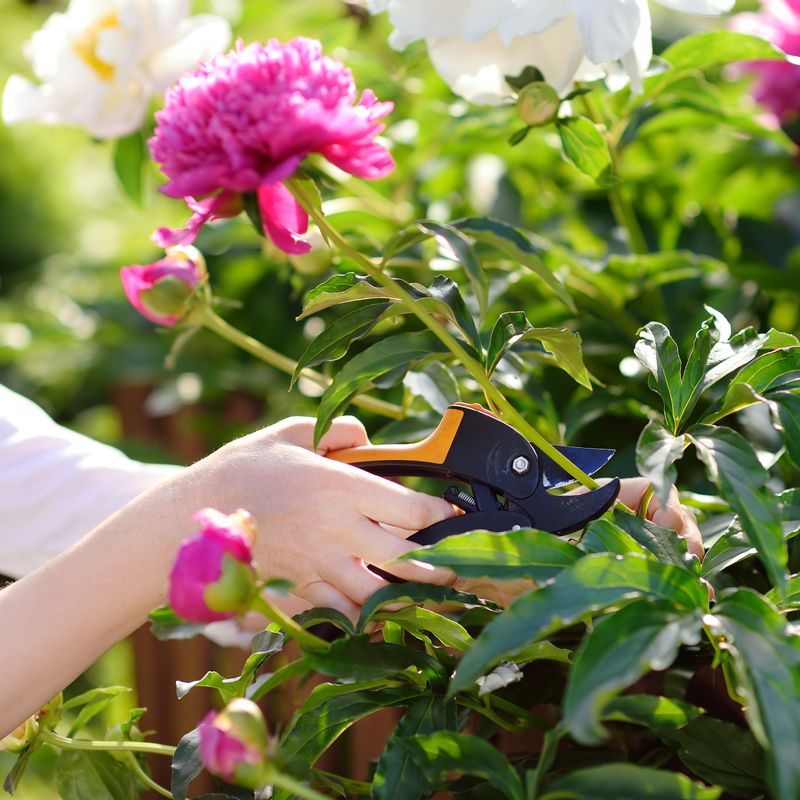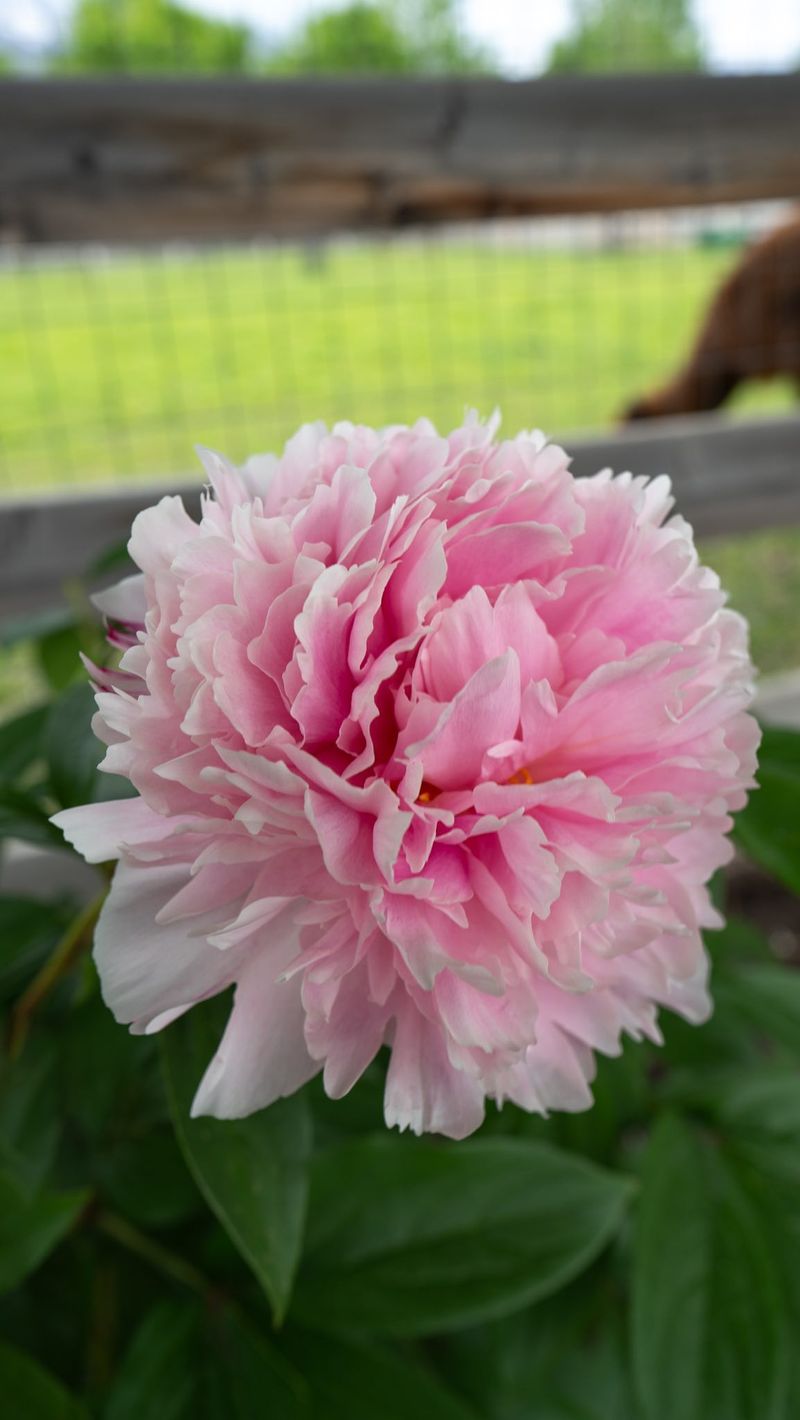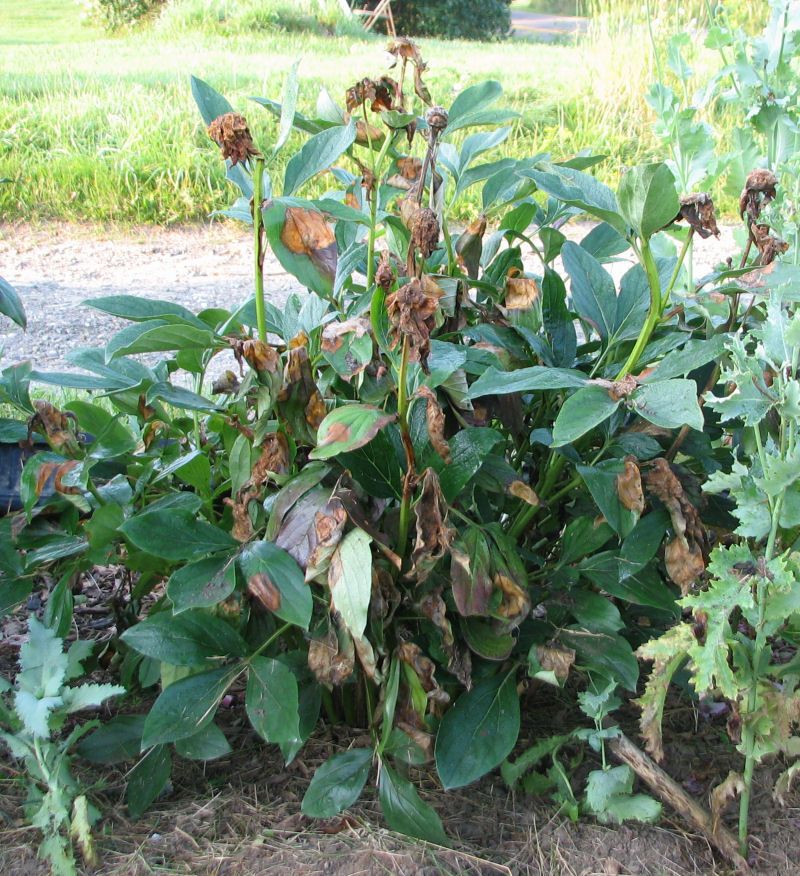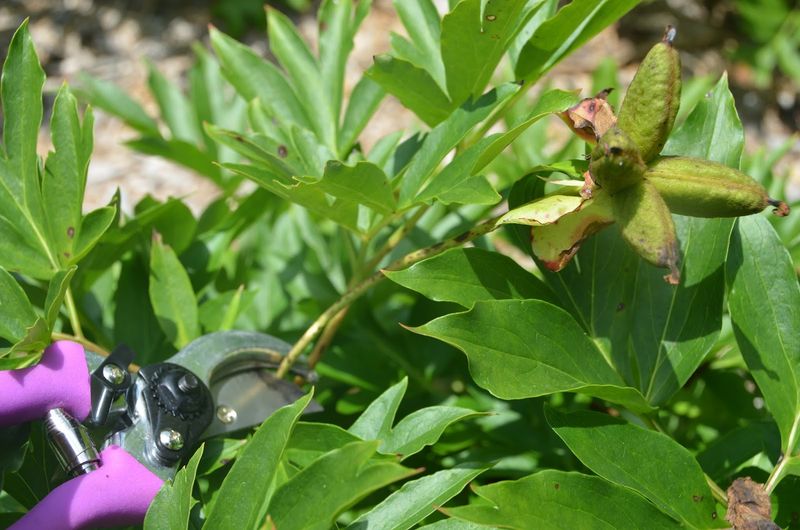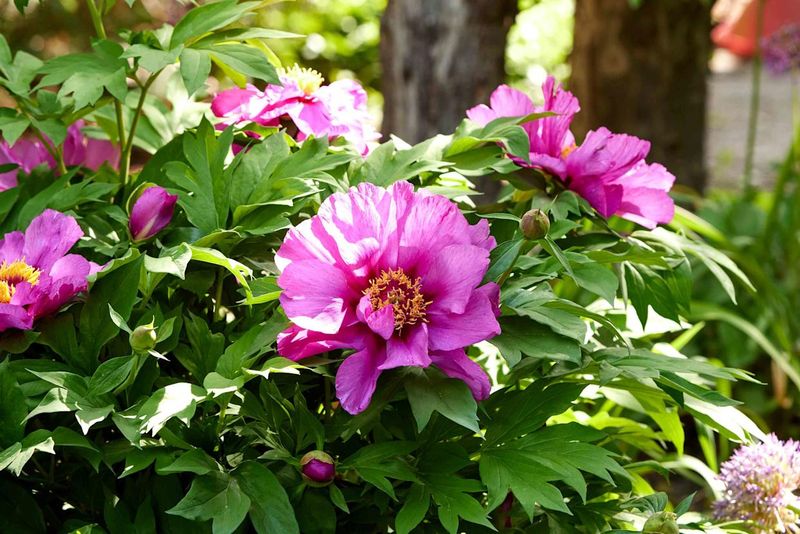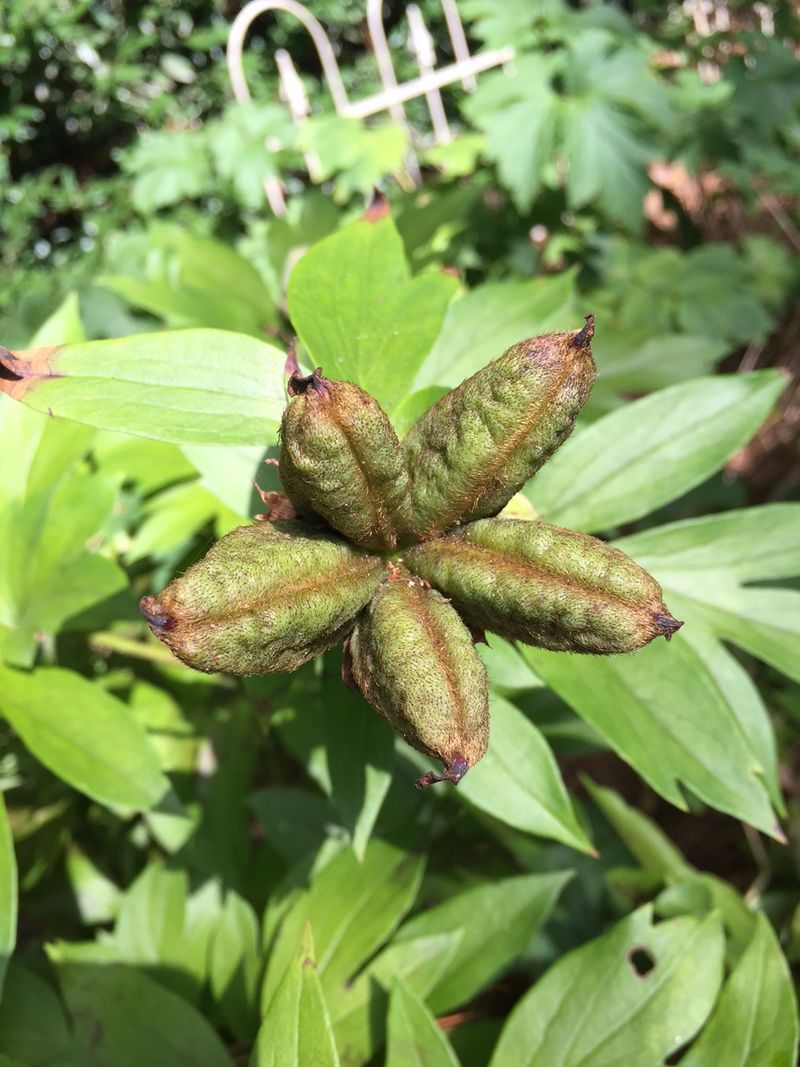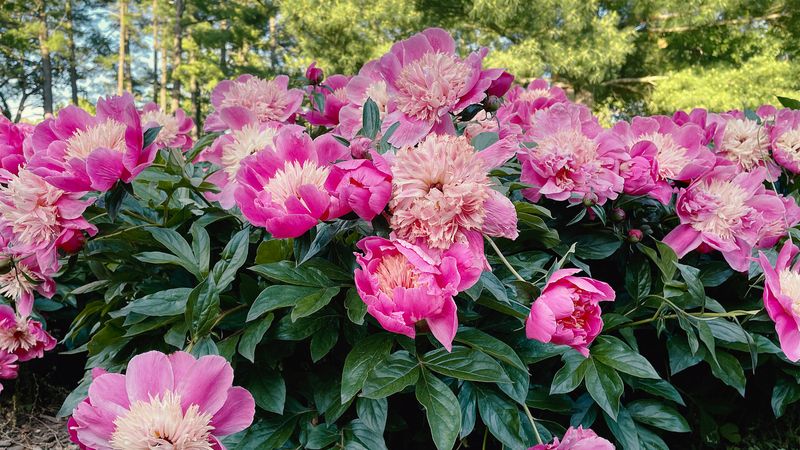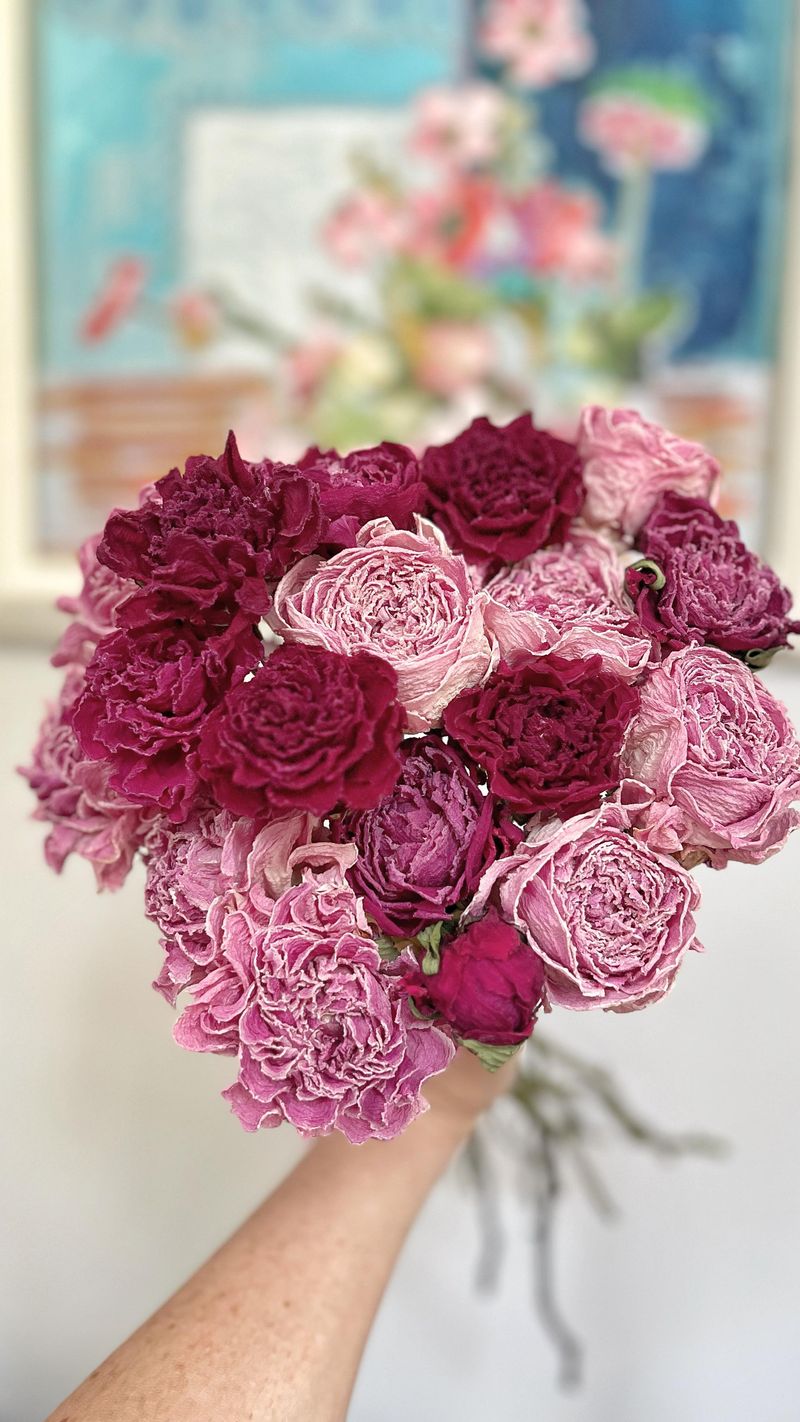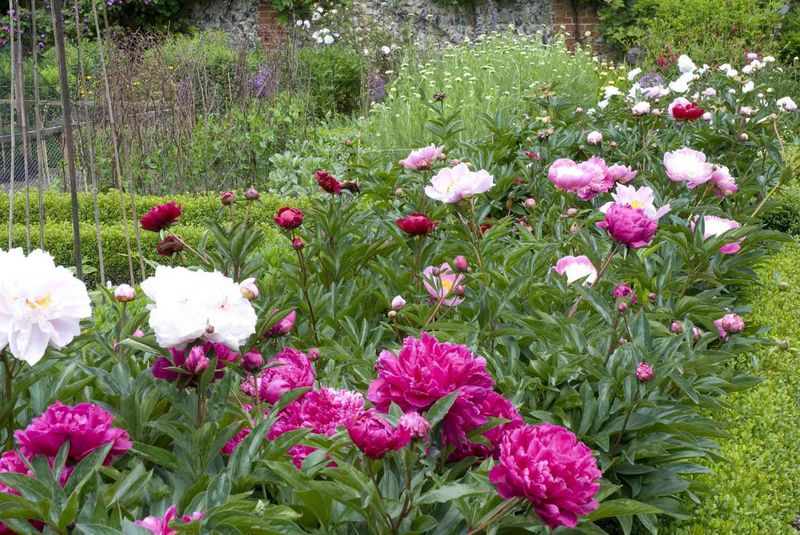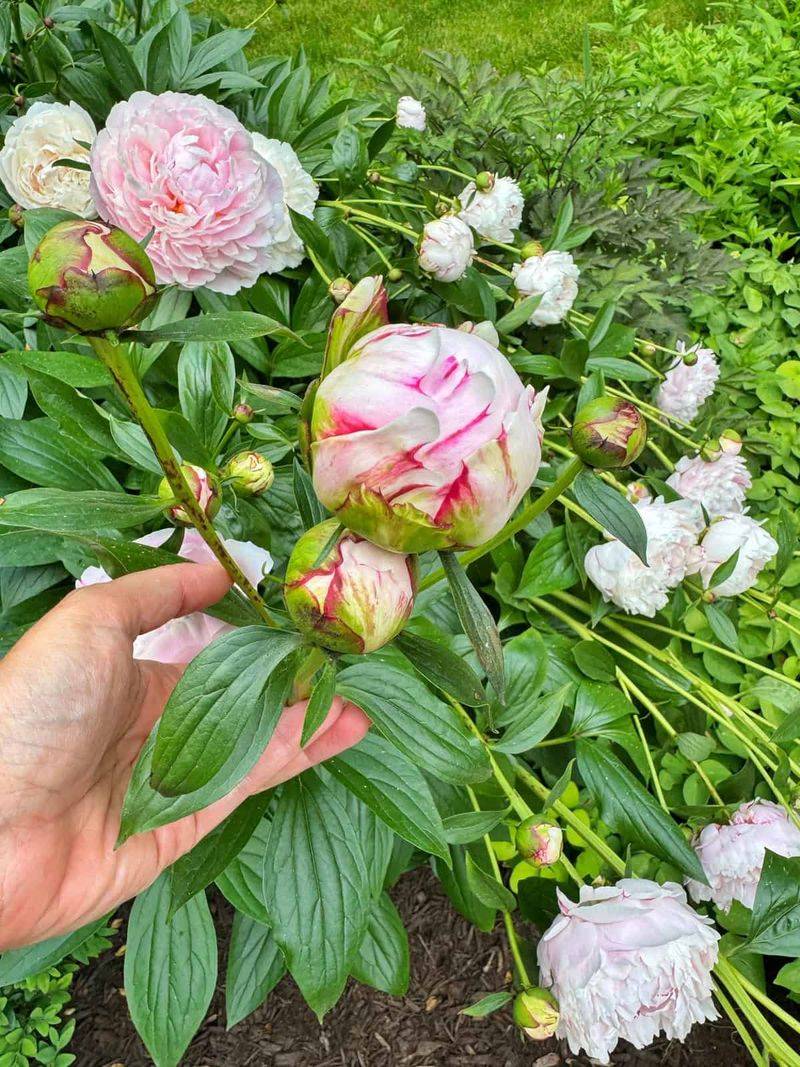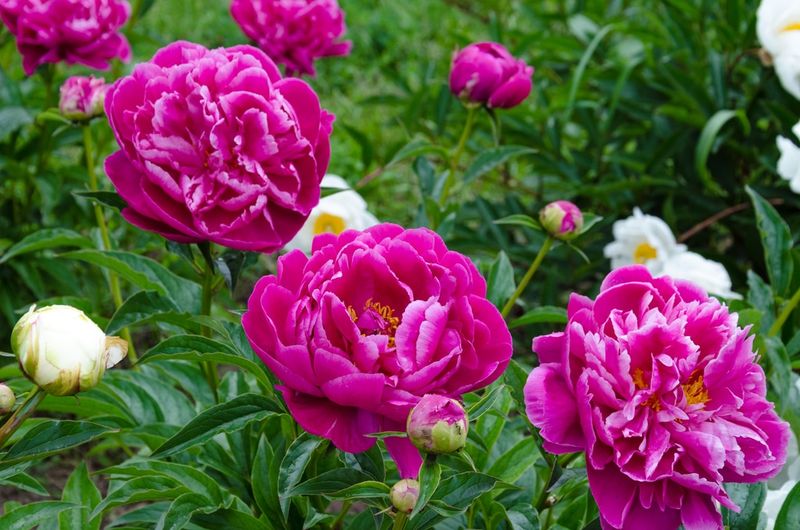Peonies are one of those springtime favorites that light up any garden with their lush, fragrant blooms. But when those flowers start to fade, it’s easy to wonder—should you deadhead or just let nature take its course?
Deadheading isn’t just about keeping things looking neat; it actually plays a role in the plant’s health and can influence how well it blooms next year.
Before you grab your pruning shears, it helps to understand the right way to care for your peonies so they stay strong and gorgeous season after season.
1. Understanding What Deadheading Actually Means
Deadheading simply means removing faded or spent flowers before they form seed pods. For peonies, this involves cutting away the wilted blooms once they’ve lost their beauty and started to turn brown.
The process prevents the plant from putting energy into seed production. When you remove those spent flowers, you’re essentially redirecting the plant’s resources back toward root strength and next year’s flower buds instead of wasting energy on seeds.
Many gardeners consider it basic maintenance, like mowing the lawn or watering. Just a quick snip with clean garden shears, and you’re helping your peonies focus on what matters most—getting stronger for next season.
2. The Best Time To Deadhead Your Peonies
Wait until the flowers have completely faded before reaching for those pruners. The ideal moment is when petals have fallen or turned brown but before seed pods fully develop. This typically happens in early summer, depending on your climate zone.
Timing matters because cutting too early wastes beautiful blooms, while waiting too long allows the plant to waste energy on seed production. You’ll know it’s time when the once-gorgeous flowers look crumpled, discolored, and past their prime.
I’ve found that a quick garden walk after a rain often reveals which blooms need removal, as water weight tends to make spent flowers droop more noticeably than healthy ones.
3. Proper Cutting Technique Matters
Make your cuts at a 45-degree angle about 1/4 inch above a strong leaf node or bud. Always use clean, sharp pruning shears to minimize damage and disease transmission. Dull tools can crush stems rather than cleanly cutting them.
Avoid removing too much foliage when deadheading. The green leaves need to remain intact throughout summer to photosynthesize and strengthen the plant for next year’s blooms. Just take the flower and a small portion of stem.
Sanitizing your tools between plants with rubbing alcohol helps prevent spreading any diseases. I learned this lesson the hard way after accidentally transferring fungus between plants one soggy spring season.
4. Why Some Gardeners Skip Deadheading Entirely
Many experienced gardeners deliberately leave spent blooms on their peonies. This natural approach allows the plant to form decorative seed pods that add interest to the garden through summer and fall. These pods start green, then mature to a dark reddish-brown.
Skipping deadheading also saves time in busy garden schedules. The energy difference between deadheaded and non-deadheaded peonies is minimal for established plants, making it an optional rather than essential task.
Wild peonies have thrived for centuries without human intervention. In naturalized settings, allowing the full life cycle mimics nature’s approach and supports seed dispersal, though garden hybrids rarely grow true from seed.
5. Benefits For Next Year’s Blooms
Removing spent flowers redirects the plant’s energy from seed production back to root development and next year’s flower buds. This energy conservation can be particularly beneficial for young or newly established peonies still building their root systems.
Deadheaded plants often develop stronger stems and larger flowers in subsequent seasons. The difference might be subtle in established plants but can be significant for peonies in their first few flowering years.
Some gardeners swear they get up to 30% more blooms after consistent deadheading over several seasons. While no scientific studies confirm exact percentages, many garden journals document noticeable improvements in flowering performance when deadheading becomes routine maintenance.
6. Disease Prevention Advantages
Spent peony flowers can become waterlogged during summer rains, creating perfect conditions for fungal diseases like botrytis blight. Removing these potential disease harbors keeps your plants healthier throughout the growing season.
Deadheading also improves air circulation around the remaining foliage. Better airflow means faster drying after rain or morning dew, which significantly reduces the risk of powdery mildew and other moisture-loving pathogens.
Regular deadheading gives you a chance to inspect plants more closely. Last summer, while removing spent blooms, I spotted early signs of leaf spot disease and treated it before it could spread throughout my peony bed—something I might have missed during routine watering.
7. Different Rules For Different Peony Types
Herbaceous peonies (the common garden type that die back in winter) benefit most from deadheading. Their energy cycles make them responsive to having spent blooms removed, especially younger plants still establishing themselves.
Tree peonies follow different rules entirely. These woody-stemmed varieties should have spent flowers removed just below the seed pod, leaving all the woody growth intact. Cutting too far down removes next year’s blooms since they form on old wood.
Intersectional (Itoh) peonies combine traits of both types. For these hybrids, remove just the spent flower heads above the first set of healthy leaves. My Itoh ‘Bartzella’ produces nearly twice as many blooms when I’m diligent about this specific deadheading approach.
8. Aesthetic Garden Considerations
Beyond plant health, deadheading creates a tidier garden appearance. Spent peony blooms can look particularly messy as they shatter and drop decaying petals onto other plants or garden paths. A quick cleanup prevents this eyesore.
The foliage of peonies remains attractive long after blooming when not cluttered with browning flowers. The glossy, deep green leaves provide structure in perennial beds throughout summer and into fall, especially when the plant isn’t visually weighed down by spent blooms.
Consider your garden style when deciding whether to deadhead. Formal gardens benefit from the manicured look of prompt deadheading, while cottage or naturalistic gardens might embrace the seed pods and natural cycle as part of their wilder aesthetic.
9. When To Leave Those Spent Blooms Alone
Historical or species peonies often produce ornamental seed pods that add visual interest. The pods start green, then mature to reddish-brown, splitting open to reveal glossy black and red seeds—quite the conversation piece in autumn gardens!
Wildlife enthusiasts might choose to skip deadheading to support local ecosystems. Various birds and small mammals occasionally feed on peony seeds, while the pods themselves provide habitat for beneficial insects during winter months.
Seed saving becomes possible when you skip deadheading. Though hybrid peonies won’t grow true from seed, species varieties can be propagated this way. Just remember that growing peonies from seed requires patience—flowering can take 3-5 years compared to the faster results from root divisions.
10. Common Deadheading Mistakes To Avoid
Cutting too much stem removes valuable foliage that the plant needs for photosynthesis. Only remove the spent flower and a short section of stem—never cut all the way to the ground during the growing season.
Timing errors happen when gardeners remove fading flowers that still have viable petals. Wait until the bloom is truly spent before snipping, or you’ll miss out on the full flowering period. The petals should be falling or brown before cutting.
Many beginners confuse buds with seed pods when deadheading late-season peonies. Look carefully—buds point upward and have a distinct teardrop shape, while developing seed pods point downward and appear more rounded. Accidentally removing buds means removing potential flowers!
11. Using Deadheaded Blooms In Your Home
Fading peony flowers still have purpose! Catch them just as they begin to decline but before they’re completely spent, and they’re perfect for dried flower arrangements. Their naturally papery texture when dried helps them maintain shape better than many other garden flowers.
Create your own potpourri by collecting petals from deadheaded peonies. Dry them thoroughly on screens in a warm, dark place, then mix with spices like cinnamon and cloves for a homemade fragrance that captures spring’s essence.
Some gardeners even use the petals in homemade tea blends or to infuse sugar for baking. While not all peony varieties are suitable for consumption, certain traditional Chinese varieties have been used this way for centuries. Always research carefully before any culinary experiments!
12. Fall Cleanup Differs From Deadheading
Don’t confuse summer deadheading with fall cleanup. Deadheading removes just the spent flowers, while fall cleanup involves cutting herbaceous peonies completely to the ground after the first hard frost has blackened the foliage.
Leaving the foliage intact through summer and early fall is crucial, even after deadheading. Those green leaves continue photosynthesizing until frost, building up energy reserves in the roots for next year’s spectacular show.
Fall cleanup timing matters tremendously. Cutting back too early deprives plants of valuable energy storage time. Wait until temperatures have consistently dropped and leaves have started yellowing naturally—usually late October or November in most growing zones.
13. Combining Deadheading With Other Care Tasks
Make deadheading part of a comprehensive peony maintenance routine. While removing spent blooms, take a moment to check for signs of disease or pest problems. Early detection means easier treatment and better outcomes.
Many gardeners combine deadheading with a light feeding. After blooming depletes some energy, applying a balanced organic fertilizer (like 10-10-10) around the plant’s drip line—not directly against the stems—supports continued health through summer.
Staking or supporting peony foliage often happens alongside deadheading. Once those heavy blooms are gone, the remaining foliage may need adjusting within support rings or cages to maintain good air circulation and prevent flopping, especially after summer storms.
14. How Weather Affects Your Deadheading Decision
Rainy seasons make deadheading more important. Wet, spent flowers become perfect breeding grounds for fungal diseases that can spread to healthy parts of the plant. Removing them promptly helps maintain plant health during damp periods.
During drought conditions, consider whether your peonies need the energy conservation that deadheading provides. Plants already stressed by lack of water might benefit from not having to produce seeds, allowing them to direct limited resources to survival functions.
Heat waves change the deadheading timeline dramatically. Flowers fade much faster during extreme temperatures, sometimes collapsing within days rather than lasting a week or more. Be ready to deadhead sooner when the mercury rises—I’ve had to adjust my usual schedule by as much as two weeks during particularly hot Junes.
15. Record-Keeping Improves Future Results
Smart gardeners keep notes about their peonies’ performance relative to deadheading practices. A simple garden journal entry noting which plants were deadheaded and which weren’t creates valuable data for comparing next year’s blooms.
Photographing your peonies before and after deadheading provides visual evidence of the practice’s effects. These images become especially useful when comparing bloom quantity and quality in subsequent seasons.
Tracking deadheading timing against weather patterns and bloom performance helps develop a personalized approach for your specific garden conditions. After three years of notes, I discovered my early-blooming varieties benefited significantly from deadheading, while my late-season cultivars showed minimal difference.

